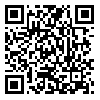Volume 6, Issue 16 (9-2010)
goljaam 2010, 6(16): 41-56 |
Back to browse issues page
1- Faculty of Arts, Architecture and Urban Planning, Islamic Azad University, Najafabad
2- Department of Textile Engineering, Amir kabir University of Technology
3- School of Mechanical Engineering, Iran University of Science and Technology
4- Institute of Technical and Vocational Higher Education, the Ministry of Jahad Agriculture
2- Department of Textile Engineering, Amir kabir University of Technology
3- School of Mechanical Engineering, Iran University of Science and Technology
4- Institute of Technical and Vocational Higher Education, the Ministry of Jahad Agriculture
Abstract: (4521 Views)
If a carpet is put under pressure during use or storage, its thickness decreases instantly and continues to decrease slowly as the pressure is not removed. Some part of this loss of thickness is not recoverable. This phenomenon is called creep and is influenced by parameters such as temperature and humidity, and it may cause breakage, burst, crease, bump, and folding line in the carpet. By studying creep of carpets, it is possible to predict their behavior under such loads to reduce the damages and effects of the creep. In this paper, a sample of folded–carpet is put under pressure of a 170 kg dead weight for 48 hours and its compression strain under various thermal and humidity condition is measured on-line. Then different statistical models were regressed on the collated data proving that creep-model of Voight-Kelvin is assumed as the best formula for determination of creep behavior of the folded carpet under different thermal and humidity conditions. Analysis of data variance detected a significant difference between various levels of thermal and humidity parameters in creep model implying their direct influence in the equation, although they are negligible compared to time effect. This research extended to calculate the Young modulus, creep constant and viscosity coefficient of the folded-carpet.
Type of Study: Research |
Received: 2018/02/26 | Accepted: 2018/02/26 | Published: 2018/02/26
Received: 2018/02/26 | Accepted: 2018/02/26 | Published: 2018/02/26
| Rights and permissions | |
 |
This work is licensed under a Creative Commons Attribution-NonCommercial 4.0 International License. |



